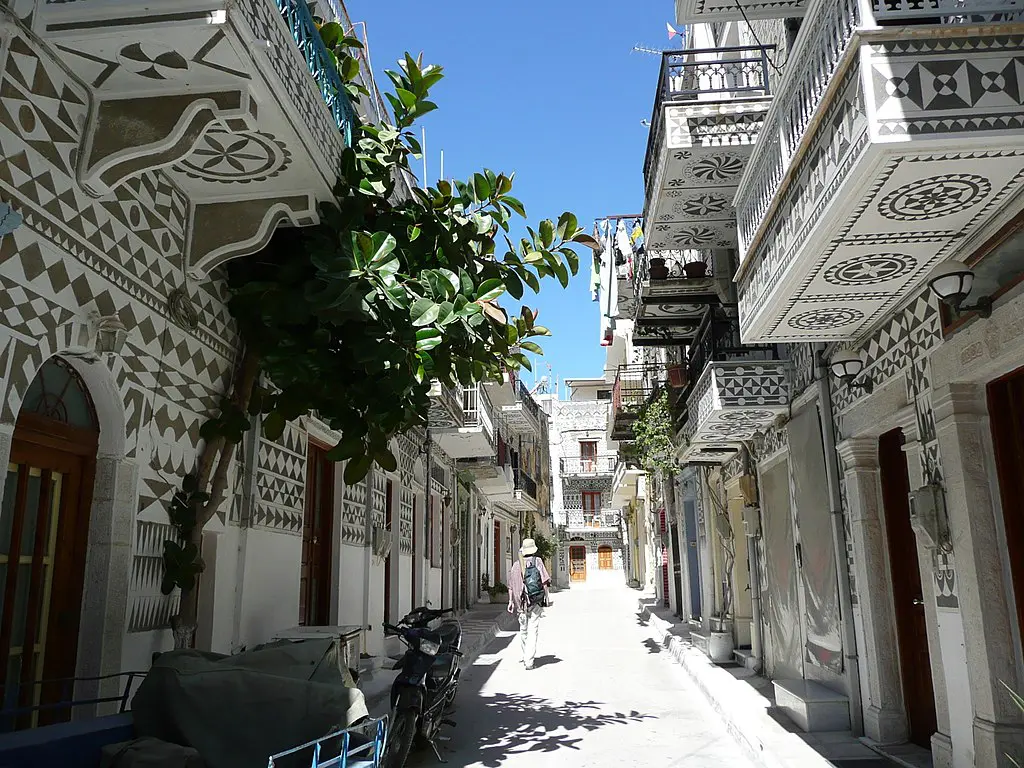
Mastiha, often referred to as the “Tears of Chios” or the “White Gold of Greece,” is a product made exclusively on the Greek island of Chios. Since antiquity, this sticky resin, which seeps from the bark of mastic trees, has been harvested not only for its flavor but for its therapeutic value.
Although the mastic tree, also called “lentisk,” is native to many areas in the Mediterranean, its bark only “bleeds” mastic on the island of Chios, making it a truly unique and nearly miraculous product.
Mastic is used as flavoring in many sweets and drinks, most famously in Mastiha, a digestive liquor from Chios. The mastic “tears,” or small bits of hardened tree sap, can also be chewed like gum, a practice dating back thousands of years. Its healing properties include prevention and treatment of stomach pains and gastric disorders and rejuvenation of the skin.
Mastic is used in cultures throughout the Mediterranean and Arab world, especially in Greek, Cypriot, Syrian, and Lebanese cuisine. The spread of mastic through the Mediterranean and Middle East is due to trade routes which date back to the Byzantine era.
Its rarity has made mastic highly sought-after throughout history. Even today, mastic is considered a precious commodity not to be wasted. The European Union has designated it a “protected designation of origin” product, confirming that only Chios can produce authentic mastic.
In fact, any attempt at producing the resin outside of the island over the years has totally failed. Researchers believe that Chios simply makes for the perfect combination of climate and soil conditions for the aromatic sap to be produced.
During the Byzantine period, it was so fundamental to the economy that villages in Chios were heavily walled to protect the island’s precious “white gold.”
Mastic production shapes daily life in Chios. In villages where the aromatic resin is produced, called “mastihohoria,” all of the residents partake in the preparation of the product.
Preparation begins in fall, when the tree bark is scored by a needle-like tool. The mastic then seeps out of the tree like tears as the bark tries to “heal” itself.
This process of gathering mastic is such an ancient tradition that UNESCO placed it on its “Intangible Cultural Heritage of Humanity” list in 2014.

Mastiha, or mastic, is an integral part of life in Chios
When the resin is dry, it is collected and taken back to the village to be cleaned. Women gather in groups to clean the “tears” of brittle, cloudy resin one-by-one so they will be ready for processing.
In response to drops in mastic prices in the nineteenth century, a cooperative called the Chios Gum Mastic Growers Association was formed. The association ensures that the two hundred families who depend on mastic production are not left unsupported in case of difficult crop seasons, wildfires, or other unforeseeable events that could halt production of the resin.
This concept of cooperation and concern for fellow mastic-workers is essential to Chios and is representative of the island’s tradition of working together and supporting one another.
The product’s rich history on the island is celebrated in Chios’s Mastic Museum, located in the southern region most associated with production of the resin. In the museum, all of the stages of mastic collection are explored, from the fields to the final stages of production.
Although most popular in the Mediterranean, the unique product from Chios has now reached all corners of the world, even South Korea and China.
Watch our short documentary on mastiha made possible through a grant by executive producer Michael Psaros:
See all the latest news from Greece and the world at Greekreporter.com. Contact our newsroom to report an update or send your story, photos and videos. Follow GR on Google News and subscribe here to our daily email!



